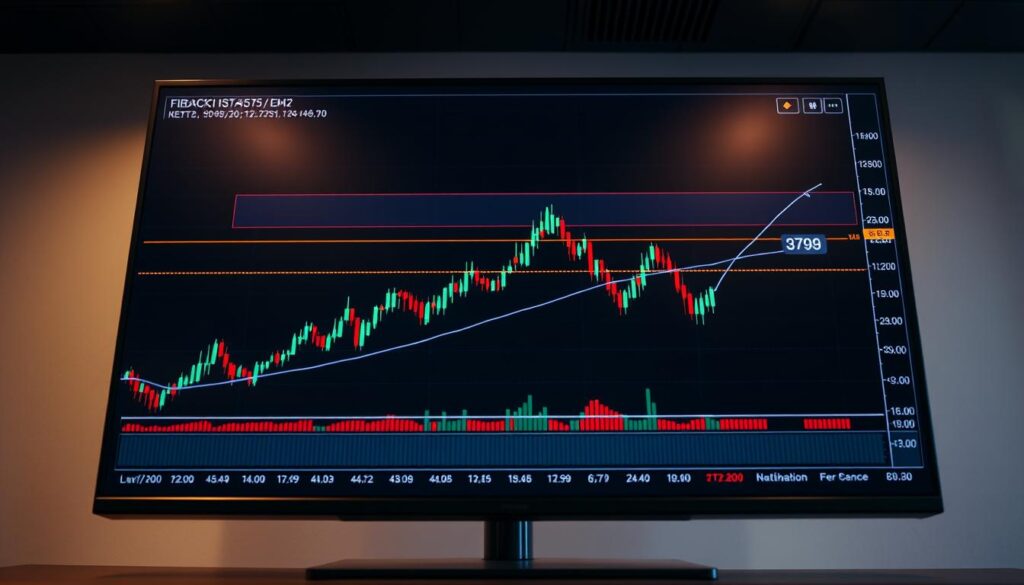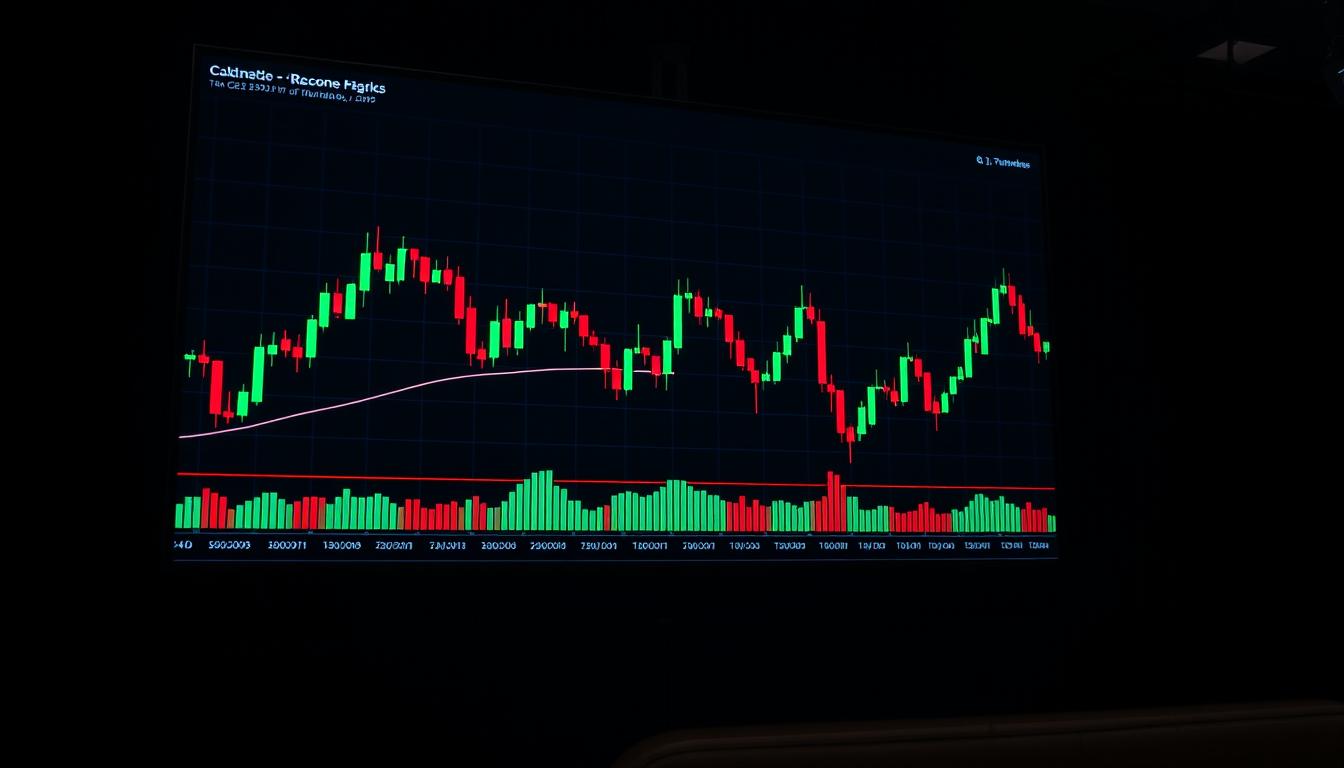Now Reading: How to Identify Crypto Bull Market Signals: Expert Guide
- 01
How to Identify Crypto Bull Market Signals: Expert Guide
How to Identify Crypto Bull Market Signals: Expert Guide

The digital asset landscape offers periods of remarkable expansion. During these times, portfolio values can experience significant surges. Recognizing the onset of these powerful phases is a critical skill for anyone involved.
Bitcoin’s performance in 2024 serves as a prime example. It achieved a year-to-date return of +126%, vastly outperforming major indices like the S&P 500 and traditional assets like gold. A key driver was the historic launch of Bitcoin ETFs, which quickly accumulated over $100 billion in assets.
This guide provides a foundational understanding of market cycles. It explains the distinct dynamics that separate periods of sustained upward momentum from downturns. We will explore the interplay of supply, demand, and institutional capital that fuels these powerful trends.
By combining various analytical methods, you can develop a comprehensive view. This approach helps in spotting early indications of a major shift. The goal is to build confidence in your decision-making within this dynamic environment.
Key Takeaways
- Bull markets are defined by sustained price increases and positive investor sentiment.
- Early recognition of market cycle shifts provides a significant strategic advantage.
- Bitcoin’s 2024 performance demonstrates the potential for substantial returns.
- A multi-faceted analysis using different data types is essential for accurate assessment.
- Understanding these dynamics is crucial for managing risk and preserving portfolio gains.
- Blockchain’s transparent nature offers unique, real-time insights into market activity.
Understanding the Crypto Bull Market Landscape
The landscape of rising digital asset valuations operates through predictable cycles driven by psychological and economic factors. These patterns repeat across different timeframes, offering valuable insights for strategic positioning.
Market Sentiment and Investor Behavior
Psychological factors play a crucial role during upward trends. Early stages typically feature cautious optimism among experienced participants.
As momentum builds, enthusiasm spreads to mainstream audiences. Media coverage intensifies, attracting new capital from previously uninterested individuals. This shift in market sentiment creates distinct behavioral patterns.
The Role of Price Cycles and Corrections
Digital asset valuations demonstrate significant volatility compared to traditional investments. Temporary pullbacks of 10-30% represent healthy consolidation phases.
These corrections allow markets to establish stronger support levels before continuing upward trajectories. Understanding this dynamic helps distinguish normal adjustments from genuine trend reversals.
| Market Phase | Sentiment Characteristics | Price Action | Investor Behavior |
|---|---|---|---|
| Accumulation | Cautious optimism | Steady growth | Experienced participants enter |
| Growth | Increasing confidence | Sustained upward movement | Mainstream interest develops |
| Distribution | Widespread euphoria | Parabolic movements | Retail participation peaks |
| Decline | Fear and uncertainty | Sharp corrections | Capital preservation focus |
Key Indicators of a Bull Market Peak
Market peaks often reveal themselves through distinct signals that separate rational investing from emotional speculation. These warning signs help investors recognize when sustainable growth gives way to unsustainable euphoria.

Parabolic Price Movements and Euphoria
One clear indicator of an approaching top is parabolic price action. This occurs when asset valuations experience near-vertical ascents that defy normal growth patterns.
Historical examples like Bitcoin’s 2017 surge to $20,000 demonstrate this pattern. Such rapid increases typically reflect emotional buying rather than fundamental value growth.
Widespread euphoria serves as another powerful contrarian signal. When mainstream media and casual investors show extreme optimism, it often signals cycle maturity.
Heightened Volatility as a Warning Signal
While digital assets naturally experience price swings, extreme volatility often precedes major reversals. Dramatic intraday fluctuations indicate market uncertainty.
These erratic movements reflect the battle between optimistic buyers and cautious sellers. Percentage swings may double or triple compared to earlier phases.
Recognizing when normal volatility escalates to extreme levels provides critical timing signals. This awareness helps protect profits accumulated during sustainable growth periods.
How to Identify Crypto Bull Market Signals
The combination of technical analysis and blockchain data creates a powerful framework for market assessment. This dual approach provides multiple confirmation points for making informed decisions.
Analyzing Technical Indicators like RSI and MACD
Technical tools offer objective measurements of market momentum. The Relative Strength Index (RSI) tracks price movement velocity on a 0-100 scale.
Readings above 70 suggest overbought conditions. Extended periods at these levels often precede corrections.
The MACD indicator reveals momentum shifts through moving average relationships. Bearish divergences occur when prices reach new highs while MACD fails to confirm.

Comparing On-Chain Data with Market Trends
Blockchain transparency provides unique insights into actual network activity. On-chain metrics include transaction volumes and active addresses.
These measurements reveal whether price movements reflect genuine demand or speculative activity. Exchange flow data shows investor behavior patterns.
The strongest confirmations occur when technical indicators and on-chain metrics align. This multi-layered approach significantly improves assessment accuracy.
Leveraging On-Chain Data for Market Analysis
On-chain metrics deliver real-time intelligence about investor behavior and supply dynamics in digital asset markets. This transparent data provides unprecedented visibility into actual network activity.
Blockchain’s public nature allows for sophisticated analysis of capital flows. Investors gain insights that traditional markets cannot offer.
Understanding Whale Activity and MVRV Metrics
Large holder movements often signal upcoming price shifts. When whales transfer assets to exchanges, it typically precedes selling activity.
The MVRV ratio compares current market value to the aggregate cost basis. This metric reveals whether assets trade at significant premiums. Historical data shows ratios above 3.5-4.0 consistently precede corrections.
Exchange Balances and Long-term Holding Patterns
Exchange balances provide critical insights into available supply. Declining balances indicate reduced selling pressure and increased conviction.
Current trends show Bitcoin exchange balances down 17% this year. This movement to cold storage signals long-term confidence among investors.
Interpreting External Catalysts and Global Trends
External factors beyond blockchain technology frequently drive major price movements in cryptocurrency markets. These influences can override even the strongest technical indicators.

World events and policy decisions create powerful catalysts that shape market conditions. Understanding these forces provides critical context for investment decisions.
Impact of Regulatory Changes and Macroeconomic Shifts
Regulatory developments represent some of the most significant market movers. Positive announcements like ETF approvals can trigger massive capital inflows.
The January 2024 Bitcoin ETF approval demonstrates this effect perfectly. Over $100 billion flowed into these products, creating sustained upward pressure.
Macroeconomic factors including interest rate changes directly influence cryptocurrency valuations. Federal Reserve policy transitions toward easing cycles typically benefit digital assets.
Reduced opportunity costs and increased system liquidity encourage capital movement into higher-risk investments. This dynamic played out during Bitcoin’s 2024 surge.
Political developments and government positions create additional market-moving events. Administration changes can shift regulatory approaches dramatically.
Investors must monitor traditional financial dynamics alongside crypto-specific news. Equity valuations and currency movements increasingly correlate with digital asset performance.
Integrating Bull Flag Chart Patterns into Your Strategy
Technical formations offer traders systematic approaches to identifying continuation opportunities. The bull flag pattern represents one of the most reliable setups during sustained upward movements.

Recognizing the Bull Flag Structure
This pattern consists of three distinct phases. First comes the pole formation with strong upward momentum. Next follows the consolidation period creating the flag shape.
Volume analysis provides critical confirmation. High activity during the pole gives way to lower volume in consolidation. The breakout then resumes with renewed buying pressure.
| Pattern Component | Price Behavior | Volume Characteristics | Timeframe |
|---|---|---|---|
| Pole Formation | Sharp upward movement | High volume rally | 1-3 days |
| Flag Consolidation | Sideways/downward drift | Declining volume | 1-6 weeks |
| Breakout Phase | Resumed uptrend | Expanding volume | Confirmation period |
Setting Entry and Stop-Loss Levels with Precision
Entry points should align with breakout confirmation above the flag’s resistance. Waiting for volume expansion prevents false signals.
Stop-loss orders belong below the flag’s support line. This placement protects capital while allowing normal price fluctuations. Proper risk management separates successful trading strategies from speculative gambling.
Profit targets can be measured using the pole’s height projected upward. This objective approach removes emotional decision-making from exit strategies.
Utilizing Advanced Metrics and Tools for Crypto Analysis
Sophisticated analytical approaches provide deeper insights into digital asset valuation cycles. These specialized tools capture dynamics that conventional technical analysis often misses.
Terminal Price and Google Search Trends
The Terminal Price indicator offers a unique valuation metric based on Bitcoin’s economic activity. It calculates potential cycle peaks by normalizing historical data across the fixed 21 million supply.
Current estimates place this terminal value around $188,000. This suggests significant upside potential remains if historical patterns repeat.
Google Search Trends serve as powerful sentiment indicators. They quantify public interest in cryptocurrency topics through search volume analysis.
Current trend values show subdued retail interest despite Bitcoin reaching $100,000. This contrasts sharply with peak search activity during previous cycle highs.
Comparative Analysis with Traditional Markets
Comparing digital assets with traditional investments provides crucial context for performance assessment. This analysis reveals relative strength during different market conditions.
Bitcoin’s 2024 return of +126% significantly outpaced major indices and commodities. This demonstrates cryptocurrencies’ role as high-beta assets during risk-on environments.
Investors benefit from synthesizing these advanced metrics with fundamental indicators. This comprehensive approach captures multiple dimensions of market conditions simultaneously.
Risk Management Strategies in Volatile Crypto Markets
Navigating the inherent volatility of digital assets requires disciplined approaches to position sizing and exposure management. Effective strategies separate sustainable success from catastrophic losses.
Even perfect market analysis becomes worthless without proper capital protection controls. The crypto market’s extreme price swings demand systematic risk management.
Managing Leverage and Exposure Effectively
Leverage amplifies both gains and losses dramatically. During favorable conditions, traders often increase borrowing to maximize returns.
This creates fragile market structures. Minor corrections can trigger liquidation cascades. Understanding personal risk tolerance prevents overexposure.
| Strategy | Purpose | Implementation | Risk Level |
|---|---|---|---|
| Position Sizing | Limit individual trade exposure | 1-2% of capital per trade | Low |
| Stop-Loss Orders | Automated exit points | Below key support levels | Medium |
| Portfolio Diversification | Reduce concentration risk | Multiple assets/sectors | Low |
| Profit-Taking Rules | Secure gains systematically | Predetermined percentages | Medium |
Successful investors balance aggressive positioning with conservative capital preservation. Proper timing considerations combined with risk controls create sustainable trading approaches.
Systematic profit-taking prevents emotional decisions during market euphoria. This discipline preserves capital for future opportunities.
Conclusion
The true measure of investment acumen lies not in predicting exact peaks but in recognizing the convergence of multiple warning indicators. Successful navigation through valuation cycles demands integrating price action, sentiment analysis, technical tools, and blockchain metrics.
Disciplined investors understand that sustainable returns come from preserving capital across complete market cycles. The cyclical nature of digital assets ensures opportunities will return for those prepared financially and psychologically.
Bitcoin’s resilience and institutional adoption validate its role in diversified portfolios. Advanced metrics like MVRV ratios and terminal price calculations provide crucial insights into valuation extremes.
Ultimately, the goal is wealth preservation through strategic positioning. This approach ensures readiness for the next accumulation phase when market conditions shift.
FAQ
What are the most reliable indicators that a crypto bull market is starting?
Reliable signals include a sustained increase in market capitalization, rising trading volume across major exchanges like Binance and Coinbase, and positive shifts in the Market Value to Realized Value (MVRV) ratio. A breakout above key long-term moving averages, such as the 200-day MA for Bitcoin, often confirms a change in trend.
How can on-chain data help identify a market peak?
On-chain data provides a transparent view of network activity. A key metric is the MVRV ratio; when it reaches extremely high levels, it often signals that an asset’s price is far above its realized value, indicating a potential top. Additionally, a significant increase in coins moving to exchanges can signal selling pressure from whales.
What role does market sentiment play in a bull run?
Sentiment is a powerful driver. Extreme euphoria, often measured by high Google search trends for terms like “Bitcoin price,” can indicate a late-stage cycle where the market is overheated. Conversely, a shift from fear to greed, tracked by tools like the Fear & Greed Index, can mark an early upward trend.
How do technical indicators like RSI and MACD signal a bull market?
The Relative Strength Index (RSI) can show when an asset is moving from oversold conditions into a strong uptrend. The Moving Average Convergence Divergence (MACD) generates buy signals when its line crosses above the signal line on the chart, confirming growing bullish momentum.
Why is a bull flag pattern considered a strong continuation signal?
A bull flag pattern represents a brief consolidation or correction after a sharp price increase. This pause allows the asset to gather strength before continuing its upward trajectory. Recognizing this structure helps traders set precise entry and stop-loss levels to capitalize on the next leg up.
How should investors manage risk during a volatile bull market?
Effective risk management is crucial. This involves using stop-loss orders to protect capital, avoiding excessive leverage that can amplify losses, and diversifying across different assets. Taking profits at predetermined levels helps lock in gains and reduce emotional decision-making.















